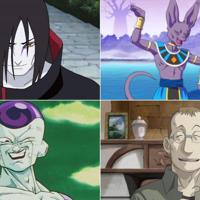
Anime is one of the most popular entertainment genres in Japan. It’s not only famous in the country, but even people of all ages across the globe have been watching anime as their favorite pastime. It’s hand-drawn by expert artists with exciting effects and animations using skilled voice talents to give life to the characters.
Moreover, it was the late 19th century when the history of anime started in Japan. Japonisme was an art movement by French nationals that has inspired skilled artists to produce modern animation. As years went by, the government of Japan encouraged the use of cartoons to promote awareness of the country’s values, disciplines, and culture that consequently paved the way to the beginning of anime’s popularity.
In addition, anime is one of the biggest and profitable industries in the country for worldwide streaming and exports. In fact, according to the AJA or The Association of Japanese Animations’ report, the revenue of the anime industry has reached billions of dollars and will continue to increase every year. However, since the pandemic started and even years before that, the anime industry has been facing different challenges that have caused worries to some expert economists in the country.
Anime’s Success and Popularity
According to the report released last 2018 by the Ministry of Internal Affairs and Communications in Japan, the broadcast content exports revenue has increased tremendously. It has grown threefold in 2013 onwards, and 2017 by 16.8 percent. Besides that, internet streaming rights have been the most significant contributor to the success of anime, with 33.5 percent of the market share.
Then, the merchandising rights with the percentage of 31.8, broadcast rights with the contribution of 23.3 percent, and the format remake rights at the market share percentage of 8.1. You can see on these numbers that all of these categories have seen significant growth, excluding the rights for DVD and video. However, internet streaming rights have substantially skyrocketed from the previous years. In fact, the revenue from that particular category reached billions of yen in 2020.
When the Pandemic Started

The anime industry has faced different challenges in previous years. It includes getting slim profit margins, being dependent on sales and gatherings from avid fans, having tiny studios, and even labor insufficiency. Besides that, when the pandemic started, the government in Japan encouraged everyone to work at home due to the national state of emergency. As a result, all people in the anime industry decided to change their structure by modifying their business model.
Because of that, many anime productions were suspended, including “One Piece,” “Pokemon,” and many other popular anime shows and programs. In addition, it also adds to the challenges that the industry is facing since most of these productions have a limited number of people in the team, and sometimes they have to work overtime, especially to midsize and small companies. In fact, some of them run with independent operations and depend on the partnership or connection they have with other studios.
Moreover, another set of challenges that the anime industry faces includes the shutdown of cinemas, and even everyone is no longer allowed to host any live shows and events. The problem with supply lines and collaborations with other companies outside the country and slow-moving progress in the productions due to working-from-home setup have become a constant dilemma.
In addition, even conducting voice-dubbing sessions, which is the essential part of producing anime content, has always been a problem. The actors should be in one place while reading the script and recording their voices to give life to the anime characters. They can do it with one voice actor at a time, which is also a standard process for different companies that produce video games across the globe, but booking a solo recording can be very expensive. Besides that, doing it that way may also affect the quality of the anime content, which is not good for business.
That’s why most producers find it difficult to conduct voice-dubbing sessions for their anime production due to the pandemic. Still, they’re trying to change the structure they’re following to adapt to the current situation. However, it may take time until the pandemic will no longer be a threat to the public.
The Crisis of Anime Industry
As mentioned earlier, Japanese anime has been popular across the globe. In fact, France once had featured ten different films to compete for the world’s most significant festival of animation, and three of them were from Japan. However, with worldwide success and recognition, the industry has been dealing with various challenges, even before the pandemic started and caused fear to most people across the globe.
These challenges include having an insufficient number of artists, very low wages, and even the demand to work long hours most of the time. Besides that, those who helped this industry to earn popularity and a massive success in revenue are now retiring. Many people are available and very willing to take full responsibility to continue the journey of what these big names have started. However, there may be no assurance of the same passion and expertise that will sustain the industry to be on top.
Moreover, the producer of “The Tale of The Princess Kaguya,” a nominee of the Oscar award, Yoshiaki Nishimura, stated that the anime industry in the country has been dealing with various issues. It includes having an unhealthy working environment for the artists, inadequate skilled and experienced animators, and even lack expertise and creativity. In addition, he also said that most employees in the anime industry have been complaining of receiving a tiny amount for remuneration, and it seems like the salary won’t compensate with what they deserve.
As previously mentioned, there are not enough talented young people who may want to be part of the anime industry and help it survive and sustain its success in the future. It also adds to the issue of having artists overworked almost every day who tend to burn out and may result in a tremendous effect on the quality of the anime content they produce.
With these following problems in this industry, even the famous star of “The Wonderland,” Keiichi Hara, has also foreseen a possible undesirable consequence in the future. He further stated that today’s primary problem is having no young and fresh animators with the necessary skills and talents to produce anime content of high quality and value.
In addition, many experts in the anime industry have the same sentiments and understanding of the possible consequences in the near future if they remain unaddressed. In fact, some of them got worried about the quality and standard of the anime content due to the absence of creativity and originality. It’s because it may lead to another set of problems after a few years and decades.
Takeaway
Many people across the globe are celebrating the success of the anime industry in Japan. With the online anime streaming and exports, avid anime fans of all ages continuously support their favorite anime shows and programs. However, with the industry’s challenges, many experts and economists have shared the same sentiments about the possible outcome of these ongoing issues. With that, all producers and company owners across the country should always seek solutions to fix these problems to avoid any consequences that may badly affect the industry in the future.
They may start investing in their animators to become world-class talents who can produce high-quality, creative, and original anime content. Besides that, they should also provide a healthy working environment to their employees to boost their efficiency and effectiveness at work while giving them the proper compensation they deserve based on the quality of what they can produce. Doing so will significantly help everyone working in this industry reach success and bring pride to the country while sustaining its worldwide recognition for all avid anime fans across the globe.
See also: Top 5 Animes That Will Always Be Binge Worthy
See also: According to Fans, These 5 Anime have the Most Annoying Fanbases


According to Fans, These 5 Anime have the Most Annoying FanbasesOct 23, 22 1pm

10 Anime Characters Who Deserve DefeatAug 22, 22 12pm

5 of the Best (or the Worst) Anime Characters with Split PersonalitiesOct 19, 22 1pm

English Dub for The Yakuza’s Guide to BabysittingNov 23, 22 5pm

More Than a Married Couple, But Not Lovers Anime Adaptation will Premiere in October This YearSep 20, 22 12pm

Five New Anime Coming out in JulyJun 29, 22 2pm

Anime Adaptation for Murai in Love has been AnnouncedJul 9, 22 5pm

Twitter Exploded in Celebration for the 16th Anniversary of Fairy TailSep 6, 22 1pm

Ni No Kuni, The Anime, The Game and How They’re RelatedJul 25, 22 9am

Is It Wrong to Pick up Girls in a Dungeon? Probably not, if there’s soon to be 4 seasonsAug 3, 22 2pm

Two New Animated Specials for My Hero AcademiaAug 14, 22 9am

Anime fans can get your own free website on RavenMay 6, 24 7pm

Artificial Intelligence from OpenAI expands to TokyoAug 27, 24 9pm

Top staff suspended at Anime DetourApr 12, 24 2pm

Anime Detour removes Troy McDonald and Kristen Loth from executive teamJun 10, 24 5pm

Anime-affiliated musicians of blank paper to perform at Anime MidwestMay 15, 1pm

Music festival "Dirtybird" reportedly failed to pay hotel venue, reports The Festive OwlSep 3, 4am

Anime Milwaukee may have hired previously-fired Anime Detour executivesJan 31, 10pm

Yor's Appeal in 'SPY×FAMILY' is Her InnocenceNov 12, 23 2pm



